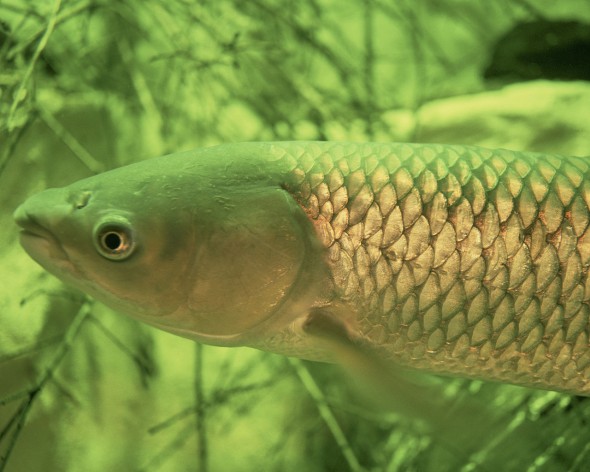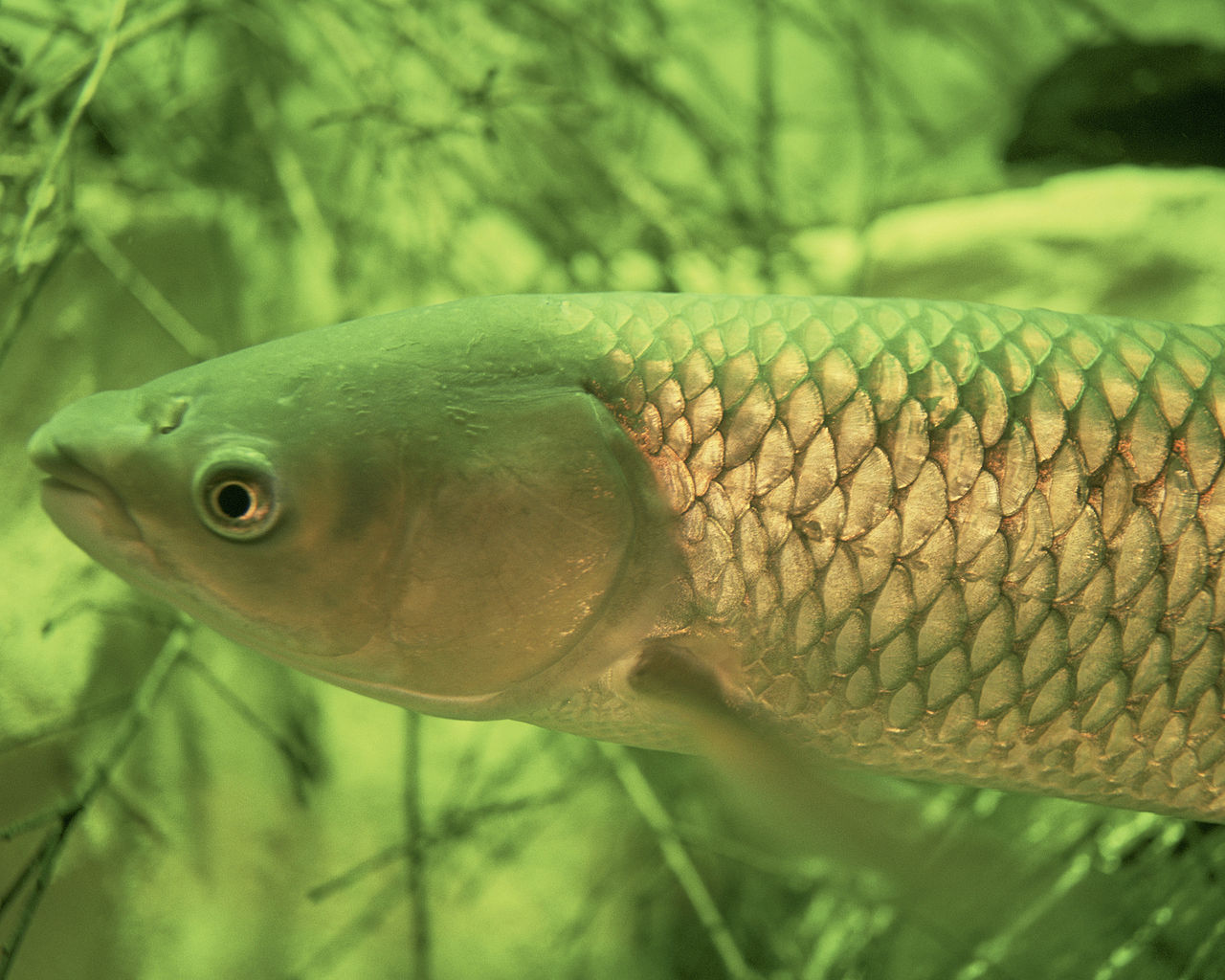Great Lakes States to Track Asian Carp and Prepare for Future Invasions
Using invasive carp already present in Lake Erie, agencies practice response for more damaging species.

By Kaye LaFond
Circle of Blue
Agencies from six Great Lakes states, one province, and the federal government will trap invasive grass carp in the western Lake Erie Basin this week in order to learn more about their numbers and where they are reproducing. The exercise will also be used to practice for possible future invasions of the more destructive bighead and silver carp, which pose a significant threat to the Great Lakes’ $US 7 billion sport-fishing industry.
Grass carp are one of four species of Asian carp — including grass, silver, bighead, and black carp — that have established themselves widely in the Mississippi River Basin after escaping aquaculture facilities in the 1970s.
While much of the attention is focused on keeping bighead and silver carp out of the Great Lakes, research on the more benign invasive grass carp population in the Lake Erie watershed has intensified since 2010, along with increased catch reports by commercial fishermen. Activities this week — partially funded by the Great Lakes Restoration Initiative — will involve trap netting, gill netting, and electrofishing of the grass carp. This will allow researchers to catch and then release the carp for tracking.
“The goal is to implant radio transmitters into the grass carp and then follow their movements to see if we can determine any spawning locations, any congregations,” said Nick Popoff, a fisheries manager with the Michigan DNR. Lake Erie is a particularly good location for this kind of research, according to Popoff, because it already has a network of receivers that are able to relay information from the transmitters.
He is not expecting a big haul of carp. However, based on the fish collected this week and the information obtained through the radio transmitters, there is potential for further action. For example, if the catch is larger than expected or if the fish are found to be spawning or congregating at a significant level, Popoff told Circle of Blue that it may be time for a harvest.
“We would probably respond again and try to remove those fish, if we determine that there are enough of them,” Popoff said.
Preparing For Invasion
The exercise has another goal as well.
“[We want] to gain more information on grass carp in Lake Erie, but we’re also using this as an opportunity to prepare for the event of a silver or bighead carp invasion,” Popoff said.
The less threatening nature of the grass carp gives various state, federal, and provincial agencies from around the Great Lakes a unique opportunity to practice for what would be a true emergency: the establishment of silver or bighead carp in Lake Erie or other Great Lakes waterways.
“We’re going to be testing our capabilities to respond, to coordinate, to collaborate,” said Popoff, adding that strong collaboration on aquatic invasive species in the Great Lakes was essential to getting this exercise off the ground. “Michigan and Ohio are leads, but we used the Council of Great Lakes Governors Mutual Aid Agreement to request assistance from all of the agencies.”
The aforementioned Mutual Aid Agreement was signed in April in Chicago as a response to the threat of aquatic invasive species in the Great Lakes. The agreement states that any party — such as a Great Lakes state or province — “may request mutual aid when an opportunity exists to prevent or address a serious threat.”
There are slated to be more than 60 employees participating in this exercise, along with a downright fleet of vessels.
“There’s gonna be 20 boats; we’re working with a local commercial fisherman,” Popoff said. “It’s pretty exciting in that we have all of these agencies working together.”
is both a scientist and a journalist, she holds an MS in Environmental Engineering from Michigan Technological University, and she brings proficiency in ESRI’s ArcGIS mapping software.










The growth of the Asian Carp has been phenomenal, and the commercial fishermen have loved it, since they now have a market for the fish. If consumers embraced this fish (which is bony) as the Chinese have, it would be great all around. The fish is a bit too soft for commercial export back to China, where there is an established market for personal consumption. Maybe we can stop treating everything as if it was an “invasion”, and work WITH the change for our own benefit.